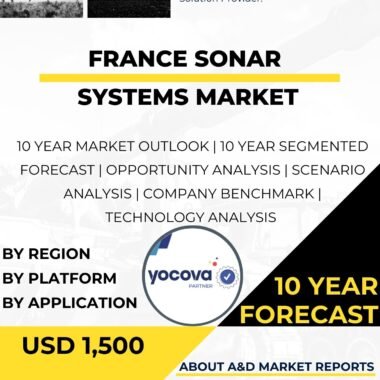Description
The Sonar Systems market in Malaysia has experienced significant growth and development in recent years, reflecting the country’s commitment to enhancing its maritime security, naval capabilities, and underwater detection capabilities. Sonar systems are advanced underwater acoustic devices used for detecting, locating, and tracking underwater objects and activities. The adoption of state-of-the-art sonar technologies enables Malaysia to establish a robust and modern maritime defense infrastructure, contributing to the country’s overall maritime security and sovereignty.
As a nation with a vast coastline and strategic maritime interests in Southeast Asia, Malaysia faces diverse security challenges, including illegal fishing, maritime piracy, territorial disputes, and potential submarine threats. The use of advanced sonar systems enables Malaysia to monitor its coastal waters effectively, detect and respond to maritime threats, and protect its maritime resources.
The Sonar Systems market in Malaysia has witnessed significant technological advancements. Modern sonar systems employ advanced transducer technology, signal processing algorithms, and data fusion techniques, providing enhanced detection ranges, higher sensitivity, and improved accuracy. These advancements have expanded the capabilities and operational effectiveness of sonar systems, making them essential tools for maritime surveillance and underwater detection.
Moreover, sonar systems play a pivotal role in the capabilities of the Royal Malaysian Navy. The Royal Malaysian Navy utilizes sonar systems on its surface vessels and submarines to detect and track potential threats, underwater obstacles, and submarine activities. Sonar systems provide the naval forces with the ability to conduct effective anti-submarine warfare (ASW) operations and protect the country’s maritime interests.
Additionally, the adoption of advanced sonar systems supports Malaysia’s commitment to enhancing its defense industrial base and fostering indigenous defense capabilities. The Malaysian government has shown interest in developing and manufacturing sonar systems through local research and development (R&D) initiatives and partnerships with global defense companies.
The Malaysian government has recognized the importance of international collaborations in acquiring and developing sonar technologies. Partnerships with leading global defense contractors and sonar system manufacturers have facilitated access to cutting-edge sonar systems and expertise. These collaborations have enabled technology transfer and capacity building, contributing to the growth of Malaysia’s domestic sonar system capabilities.
While the Sonar Systems market in Malaysia shows promise, it is not without challenges. One of the primary hurdles is the high cost of acquiring and maintaining advanced sonar systems. These sophisticated underwater acoustic devices require significant investment in research, development, procurement, training, and logistical support. Budget constraints may impact the pace and scale of sonar system acquisition and modernization efforts.
Moreover, ensuring skilled operators and specialized training are essential for maximizing the benefits of sonar systems. The Royal Malaysian Navy must invest in continuous training and education to ensure their personnel possess the necessary expertise to operate sonar systems effectively and interpret the data obtained accurately.
Additionally, addressing environmental challenges and underwater noise pollution is crucial for sonar system operations. Underwater noise generated by human activities can interfere with sonar signals, affecting the accuracy and reliability of detection. Proper environmental assessments and management measures must be implemented to minimize the impact of noise pollution on sonar system performance.
Looking ahead, the Sonar Systems market in Malaysia is poised for further growth. The government’s commitment to enhancing its maritime security, naval capabilities, and investing in advanced sonar technologies will drive continued investments in sonar systems. As sonar technologies continue to evolve and demonstrate their effectiveness, they are likely to play an increasingly pivotal role in Malaysia’s maritime defense and security strategy.
Moreover, Malaysia’s participation in regional security collaborations and joint naval exercises will likely influence its sonar system requirements. As the country seeks to strengthen its position as a key player in regional maritime defense and security cooperation, the demand for advanced sonar systems with interoperability and compatibility with allied forces will increase.
In conclusion, the Sonar Systems market in Malaysia has experienced significant growth and progress. The government’s focus on enhancing its maritime security, naval capabilities, and investing in advanced sonar technologies has paved the way for the integration of modern sonar systems into its maritime defense infrastructure. International collaborations and domestic research efforts have positioned Malaysia as a participant in the global sonar system technology landscape.
However, challenges related to budget constraints, technology development, training, underwater noise pollution, and engineering expertise must be addressed proactively to sustain and enhance the growth of the Sonar Systems market in the years to come. By maintaining a modern and capable maritime defense infrastructure, Malaysia can effectively enhance its maritime security, protect its territorial waters, and safeguard its maritime resources.




